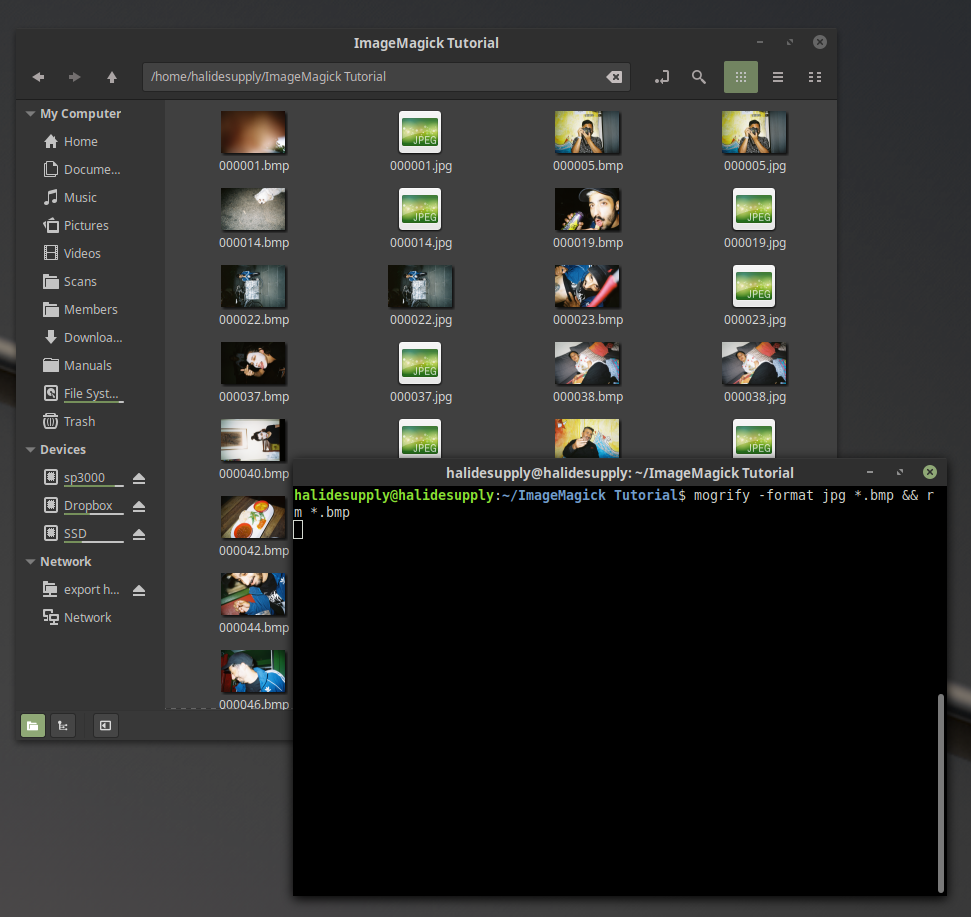

- IMAGEMAGICK CONVERT QUALITY HOW TO
- IMAGEMAGICK CONVERT QUALITY PDF
- IMAGEMAGICK CONVERT QUALITY MP4
- IMAGEMAGICK CONVERT QUALITY INSTALL

I received help previously with my CMYK/RGB colourspace problem, but now I have another problem: quality.
IMAGEMAGICK CONVERT QUALITY PDF
Let's now look at the top two ImageMagick JPEG compression strategies from this StackOverflow post, then try combining them. brettalton wrote:I have to convert 64 PDF files to JPG for work.
IMAGEMAGICK CONVERT QUALITY INSTALL
(I did brew install imagemagick to get it onto my Mac.) If you don't have it yet, follow the instructions at to install it. When you install it, you can type convert at the command line (followed by whatever parameters you want) to resize, optimize, distort, and draw on images. convert is part of the ImageMagick package, which comes with many Linux distributions. ImageMagick version: Version: ImageMagick 7.0.8-14 Q16 x8664 Environment (Operating system, version and so on): Ubuntu 16. Open terminal and enter the following command convert inputfile output.tiff. The following command takes an image named howtogeek.jpg, rotates it by 90 degrees and saves the rotated image as howtogeek-rotated.jpg: convert howtogeek.jpg -rotate 90 howtogeek-rotated.ImageMagick is a tool for editing images. The quality of the output file is bad while the quality of input file is good. ImageMagick is a robust collection of tools and libraries to read, write.
IMAGEMAGICK CONVERT QUALITY MP4
The following command will resize an image to a height of 100: convert example.png -resize x100 example.png Rotating an Image Choose the MP4 file you want to convert Change quality or size (optional). convert -density 300 -trim test.pdf -quality 100 test.jpg It's a little over twice the file size, but it looks better to me.-density 300 sets the dpi that the PDF is rendered at.-trim removes any edge pixels that are the same color as the corner pixels.-quality 100 sets the JPEG compression quality to the highest quality. magick input.heic -quality 100 output. To be clear, the resulting output size is not a concern. The following command will resize an image to a width of 200: convert example.png -resize 200 example.png jpg files with imagemagick, with the goal of retaining as much of the quality from the original image as possible. Ideally, we would have a program that could read a PDF file, examine all the images, tell us the density. For example, if the original is 300 dpi (dots per inch), density should be 300, 600 or 150.

Raster images in PDF work best when '-density' is an integer multiple (or fraction) of the original. You can also specify a specific width or height and ImageMagick will resize the image to that width or height while preserving the aspect ratio. In general, higher numbers give higher quality.

If you want to force the image to become a specific size - even if it messes up the aspect ratio - add an exclamation point to the dimensions: convert example.png -resize 200x100! example.png import: Capture the screen to an image file. identify: Display the image dimensions, quality, and other image metadata. This tool can also blur, crop, despeckle, dither, and otherwise modify the content of an image. It will alter the image to fit within a 200×100 area, but the image may not be exactly 200×100. convert: Convert images from one file format to another. ImageMagick will try to preserve the aspect ratio if you use this command. We list a few examples of the magick command here to.
IMAGEMAGICK CONVERT QUALITY HOW TO
See Command Line Processing for advice on how to structure your magick command or see below for example usages of the command. We’ve used the same file name here, so ImageMagick will overwrite the original file. Use the magick program to convert between image formats as well as resize an image, blur, crop, despeckle, dither, draw on, flip, join, re-sample, and much more.


 0 kommentar(er)
0 kommentar(er)
